Honda ZR-V vs Toyota Yaris – Differences & prices compared
Compare performance, boot space, consumption and price in one view.
Find out now: which car is the better choice for you – Honda ZR-V or Toyota Yaris?
The Honda ZR-V (SUV) comes with a Full Hybrid engine and transmission. In comparison, the Toyota Yaris (Hatchback) features a Full Hybrid or Petrol engine with Automatic or Manuel transmission.
When it comes to boot capacity, the Honda ZR-V offers 380 L, while the Toyota Yaris provides 286 L – depending on how much space you need. If you’re looking for more power, decide whether the 184 HP of the Honda ZR-V or the 280 HP of the Toyota Yaris suits your needs better.
In terms of consumption, the values are 5.70 L per 100 km for the Honda ZR-V, and 3.80 L for the Toyota Yaris.
Price-wise, the Honda ZR-V starts at 36800 £, while the Toyota Yaris is available from 21900 £. Compare all the details and find out which model fits your lifestyle best!
Honda ZR-V
The Honda ZR-V is a standout in the compact SUV segment, offering a blend of sleek design and practical functionality. Its exterior is characterized by dynamic lines and a bold grille, capturing attention on the road. Inside, the ZR-V impresses with a comfortable and well-appointed cabin, providing drivers and passengers with a refined driving experience.
details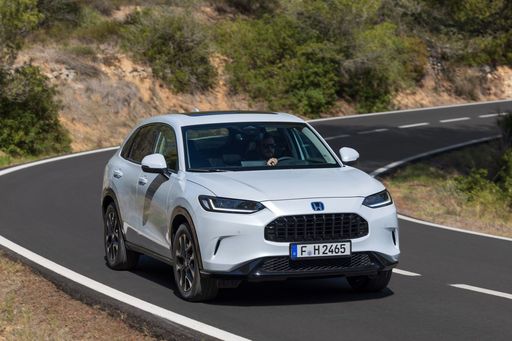 @ Honda
@ Honda
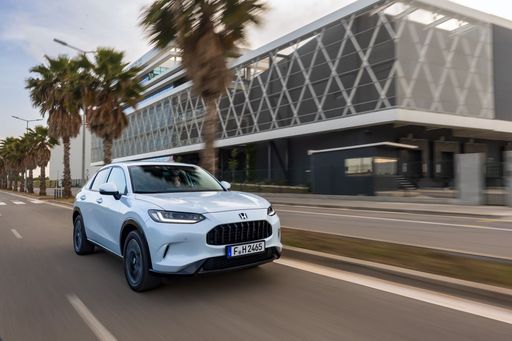 @ Honda
@ Honda
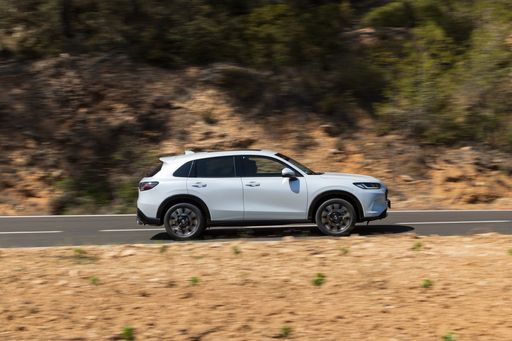 @ Honda
@ Honda
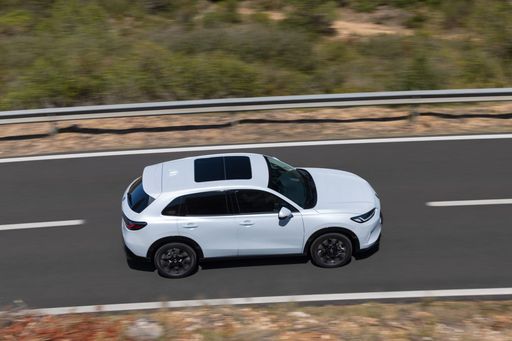 @ Honda
@ Honda
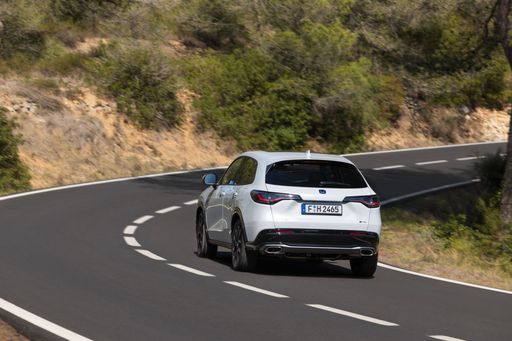 @ Honda
@ Honda
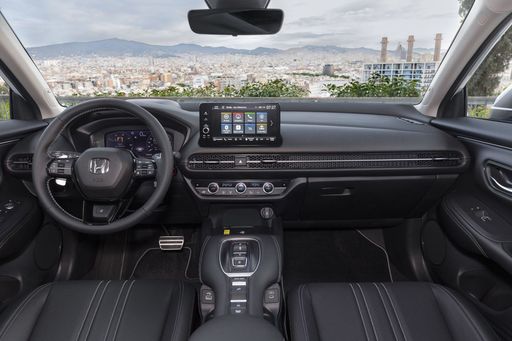 @ Honda
@ Honda
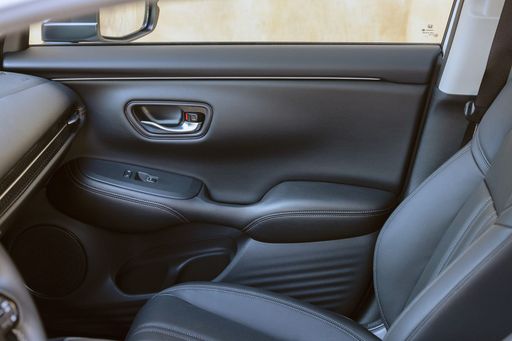 @ Honda
@ Honda
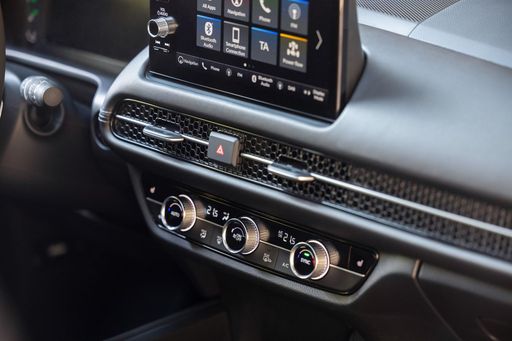 @ Honda
@ Honda
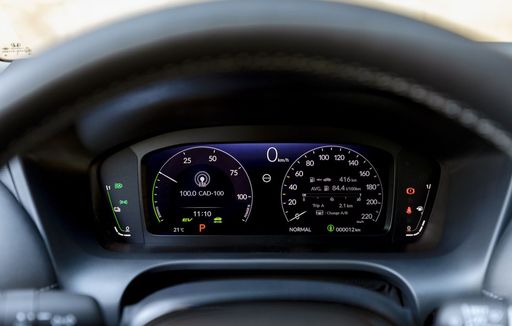 @ Honda
@ Honda
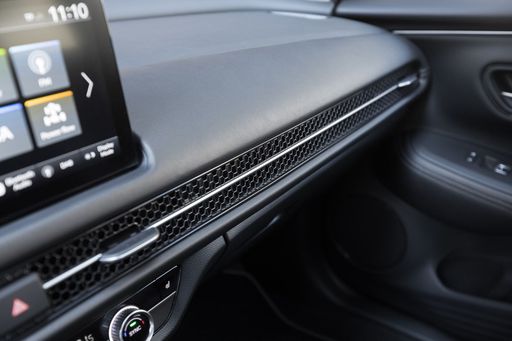 @ Honda
@ Honda
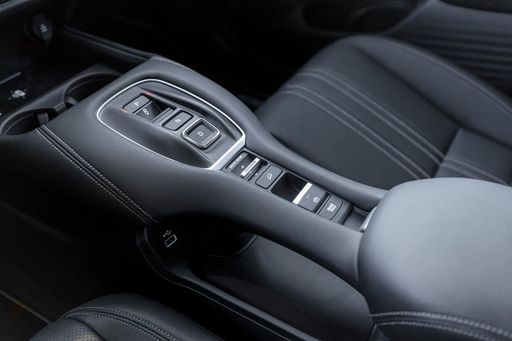 @ Honda
@ Honda
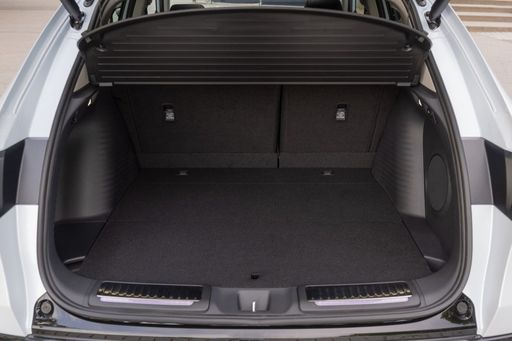 @ Honda
@ Honda
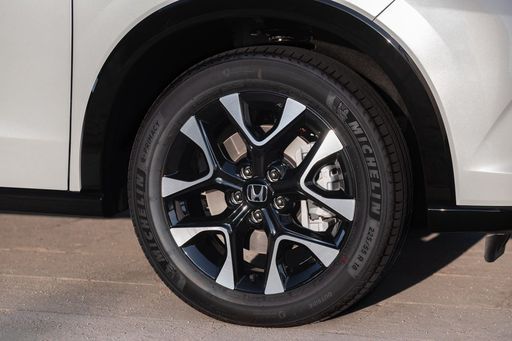 @ Honda
@ Honda
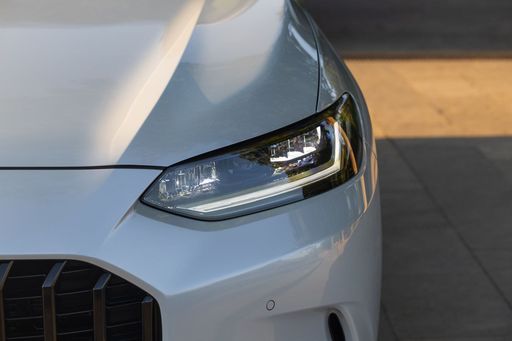 @ Honda
@ Honda
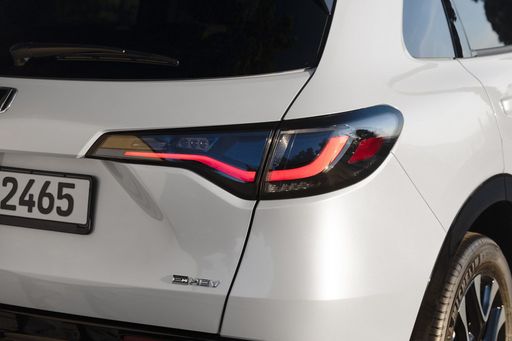 @ Honda
@ Honda
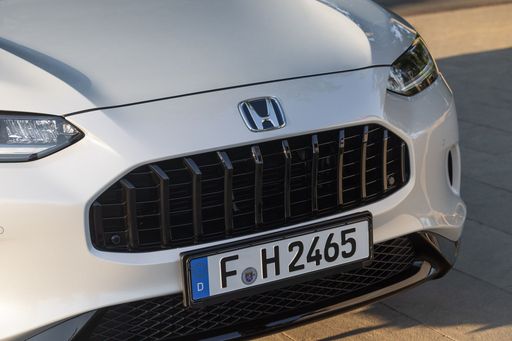 @ Honda
@ Honda
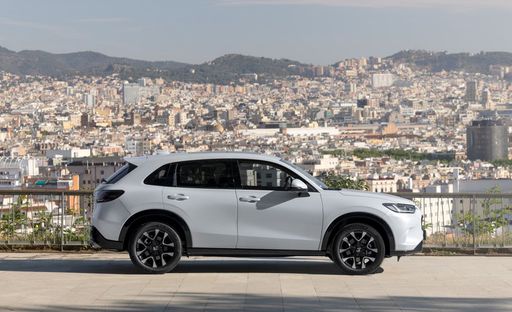 @ Honda
@ Honda
Toyota Yaris
The Toyota Yaris exudes a charming blend of practicality and style, making it an appealing choice for urban drivers. Its compact design allows for easy manoeuvrability in crowded city streets, while the interior offers a surprisingly spacious and comfortable environment. With a focus on fuel efficiency and reliability, the Yaris remains a popular option for those seeking a balance between performance and economy.
details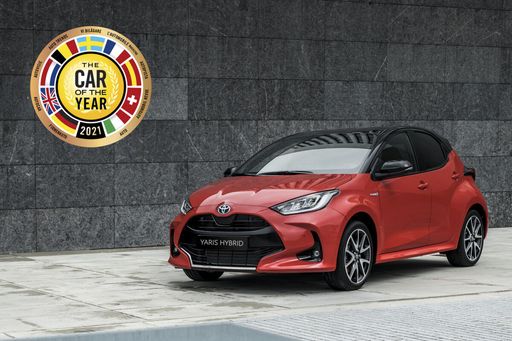 @ Toyota
@ Toyota
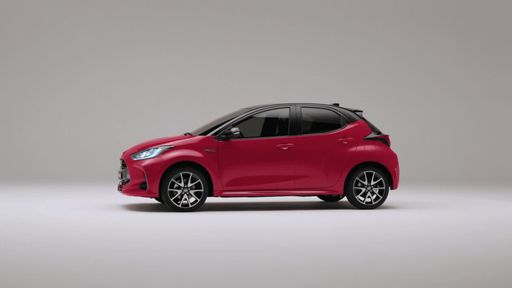 @ Toyota
@ Toyota

|

|
|
|
|
Costs and Consumption |
|
|---|---|
|
Price
36800 - 40400 £
|
Price
21900 - 45000 £
|
|
Consumption L/100km
5.7 - 5.8 L
|
Consumption L/100km
3.8 - 9.5 L
|
|
Consumption kWh/100km
-
|
Consumption kWh/100km
-
|
|
Electric Range
-
|
Electric Range
-
|
|
Battery Capacity
-
|
Battery Capacity
-
|
|
co2
130 - 132 g/km
|
co2
87 - 215 g/km
|
|
Fuel tank capacity
57 L
|
Fuel tank capacity
36 - 50 L
|
Dimensions and Body |
|
|---|---|
|
Body Type
SUV
|
Body Type
Hatchback
|
|
Seats
5
|
Seats
4 - 5
|
|
Doors
5
|
Doors
3 - 5
|
|
Curb weight
1660 - 1710 kg
|
Curb weight
1090 - 1356 kg
|
|
Trunk capacity
370 - 380 L
|
Trunk capacity
141 - 286 L
|
|
Length
4568 mm
|
Length
3940 - 3995 mm
|
|
Width
1840 mm
|
Width
1745 - 1805 mm
|
|
Height
1613 mm
|
Height
1455 - 1500 mm
|
|
Payload
440 - 455 kg
|
Payload
289 - 525 kg
|
Engine and Performance |
|
|---|---|
|
Engine Type
Full Hybrid
|
Engine Type
Full Hybrid, Petrol
|
|
Transmission
-
|
Transmission
Automatic, Manuel
|
|
Transmission Detail
-
|
Transmission Detail
Manual Gearbox, Automatic Gearbox, CVT
|
|
Drive Type
Front-Wheel Drive
|
Drive Type
Front-Wheel Drive, All-Wheel Drive
|
|
Power HP
184 HP
|
Power HP
116 - 280 HP
|
|
Acceleration 0-100km/h
7.9 - 8 s
|
Acceleration 0-100km/h
5.5 - 9.7 s
|
|
Max Speed
173 km/h
|
Max Speed
175 - 230 km/h
|
|
Torque
315 Nm
|
Torque
390 Nm
|
|
Number of Cylinders
4
|
Number of Cylinders
3
|
|
Power kW
135 kW
|
Power kW
85 - 206 kW
|
|
Engine capacity
1993 cm3
|
Engine capacity
1490 - 1618 cm3
|
General |
|
|---|---|
|
Model Year
2025
|
Model Year
2024 - 2025
|
|
CO2 Efficiency Class
D
|
CO2 Efficiency Class
B, G
|
|
Brand
Honda
|
Brand
Toyota
|
Honda ZR-V
The Honda ZR-V: A Fusion of Efficiency and Innovation
The Honda ZR-V has made significant waves in the automotive sphere with its latest models, which exhibit a seamless blend of advanced technology and innovative design. As a captivating SUV option, it offers a compelling case for those seeking efficiency and performance wrapped in a sophisticated package. This article delves into the intricate details of this impressive vehicle.
Power Under the Hood: The i-MMD e:HEV Full Hybrid System
At the heart of the ZR-V lies Honda's i-MMD e:HEV Full Hybrid system. This powertrain delivers an impressive output of 184 HP (135 kW), offering a smooth and responsive driving experience. The hybrid engine is complemented by a front-wheel drive configuration, ensuring efficiency and stability on the road.
With a 2.0-liter engine capacity and four cylinders, the Honda ZR-V strikes a balance between power and fuel economy. Models are available with a consumption rate as low as 5.7 to 5.8 liters per 100 kilometers, highlighting the brand's commitment to sustainability without compromising on performance.
Performance and Efficiency: The Perfect Balance
Acceleration is another highlight, with the ZR-V able to reach 0-100 km/h in approximately 7.9 to 8 seconds. Coupled with a top speed of 173 km/h, this SUV is both nimble and fast, suitable for urban landscapes and highway cruising alike. Additionally, the vehicle achieves a CO2 efficiency class D, with emissions ranging from 130 to 132 g/km.
Design and Comfort: More Than Meets the Eye
Design is a pivotal aspect of the Honda ZR-V. Its dimensions—4568 mm in length, 1840 mm in width, and 1613 mm in height—project a commanding presence on the road, while still retaining the maneuverability you'd expect from a modern SUV. With a curb weight ranging from 1660 to 1710 kg, it is well-balanced for both performance and comfort.
Inside, the ZR-V is designed to accommodate five passengers comfortably, with an array of trim levels including Advance, Elegance, and Sport. The spacious interior boasts a trunk capacity of 370 to 380 liters, making it an ideal choice for families or anyone needing ample cargo space for their adventures.
Safety and Reliability: Core Tenets of Honda Philosophy
Honda is renowned for prioritizing safety and the ZR-V is no exception. It is equipped with the latest safety technologies, ensuring peace of mind for you and your passengers. From advanced driver-assistance systems to robust build quality, Honda has left no stone unturned in making the ZR-V a reliable companion on the road.
Conclusion: A Standout in the SUV Segment
The Honda ZR-V stands as a testament to the evolution of hybrid technology and modern design. With its superior performance metrics, fuel efficiency, and luxurious features, it appeals to a broad range of drivers. Whether navigating city streets or cruising on open highways, the ZR-V is poised to deliver an exceptional driving experience, making it a noteworthy candidate for those in the market for a new SUV.
With a price range starting from €42,900 to €47,100, the ZR-V offers competitive options for different budgets and needs, true to Honda's legacy of providing value and innovation in the automotive industry.
Toyota Yaris
Introducing the Next-Gen Toyota Yaris: A Blend of Innovation and Technology
The Toyota Yaris has long been lauded for its efficiency, reliability, and practicality. As we venture into the 2024 model year, Toyota has upped the ante with the latest versions of this popular hatchback, melding cutting-edge technology with eco-conscious design. Here’s an in-depth look at what makes the current Yaris line-up stand out from the crowd.
Efficient Powertrains: Hybrid and Beyond
Spearheading the technological innovation in the Yaris range is the introduction of various hybrid models. The Yaris offers a 1.5-litre full-hybrid engine, marrying a petrol engine with an electric motor to produce between 116 and 130 PS. This power blend is controlled via a sophisticated CVT-gearbox, optimizing both performance and fuel efficiency, with consumption figures ranging from an impressive 3.8 to 4.2 litres per 100 km.
For those seeking pure performance, the GR Yaris variants provide a turbocharged 1.6-litre engine capable of producing 280 PS. This power is delivered via a choice of manual or automatic transmission, giving drivers the tactile involvement or convenience they desire.
Design that Fulfils and Inspires
The Yaris hasn't forgotten its roots as a compact, city-friendly hatchback, measuring between 3,940 and 3,995 mm in length. With its bold front grille, sleek lines, and a choice of striking colours, it's a car that turns heads while remaining perfectly suited for urban environments.
The interior is equally impressive, designed with a focus on driver convenience and comfort. Depending on the variant, Yaris can offer generous cargo space of up to 286 litres, making it a perfect companion for everyday tasks or weekend escapes.
Technological Integration: The Smart Choice
Toyota's approach goes beyond just improving engine technology; the Yaris is packed with innovative features aimed at enhancing the driving experience. It boasts a suite of advanced safety systems such as lane departure alert, pre-collision system, and adaptive cruise control, ensuring peace of mind on the road.
The infotainment system in the Yaris is designed to keep you connected, offering seamless smartphone integration, a user-friendly interface, and an intuitive navigation system, ensuring that you're always informed and entertained.
The Cost of Innovation
Owning a Yaris is not just about impressive technology; it's also about making economic sense. With a price range between €25,500 and €49,990, and monthly costs spanning from €748 to €1,513, it offers a broad spectrum to suit different budget needs.
Concerned about emissions? You can rest easy knowing that the Yaris boasts a CO2 efficiency class ranging from B to G, thanks to its low emissions output of between 87 to 215 g/km.
Conclusion: The Toyota Yaris Drives the Future
The Toyota Yaris continues to be a strong contender in the compact car segment, pushing boundaries with its innovative full-hybrid systems and performance-oriented GR models. It's a remarkable blend of design, technology, and economy, ensuring it remains a top choice for drivers who demand more from their hatchbacks.
Whether you're seeking the efficiency of a hybrid or the thrill of the GR Yaris, there's a model tailored to your unique driving needs in Toyota's latest Yaris lineup.
Which drive types are available for the Honda ZR-V?
Available as Front-Wheel Drive.
The prices and data displayed are estimates based on German list prices and may vary by country. This information is not legally binding.
